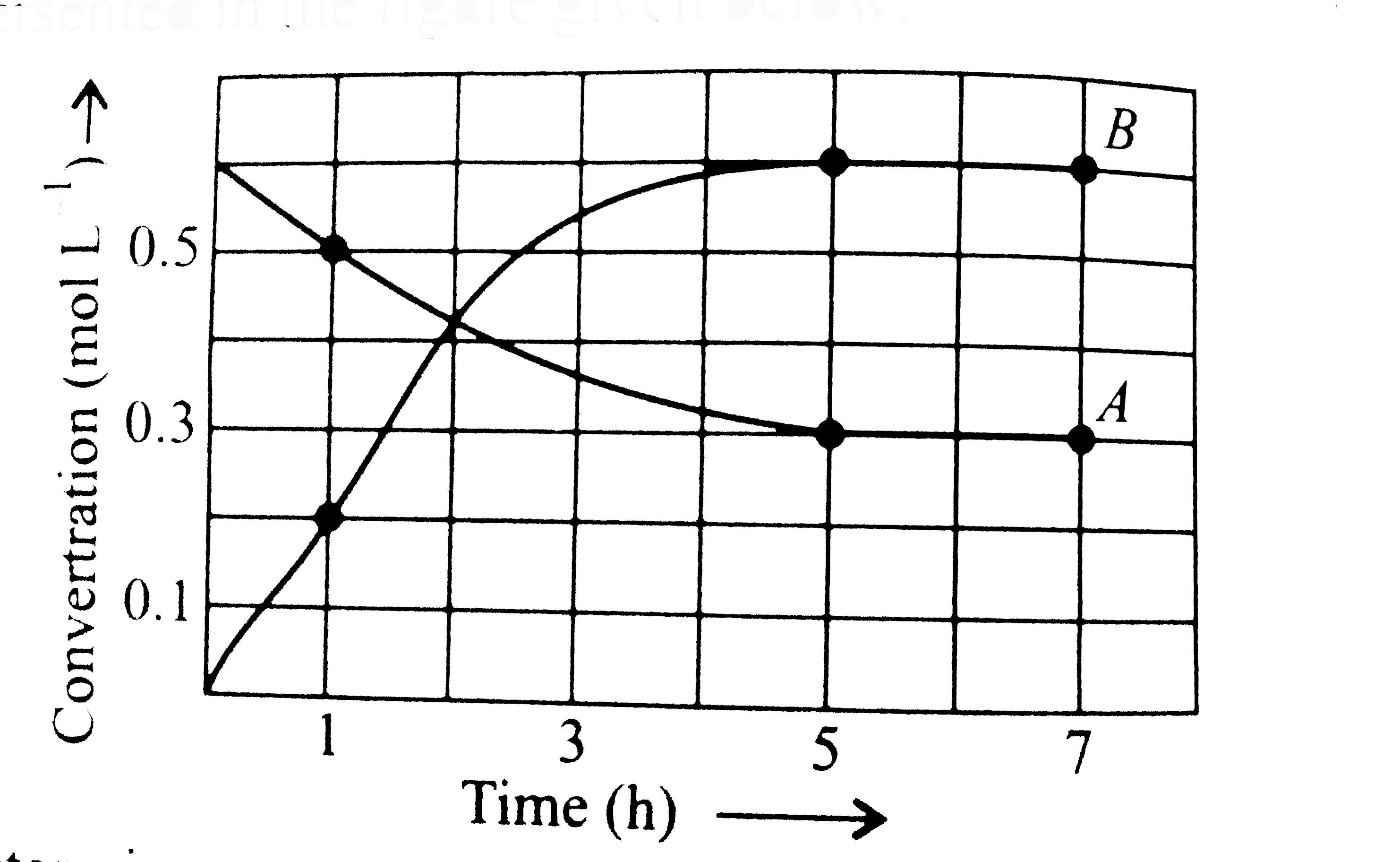Complete Solutions to Archives (Subjective) of chapter CHEMICAL EQUILIBRIUM of Class 11 book with complete answers and questions
| Class 11 | CHEMISTRY |
| Chapter | CHEMICAL EQUILIBRIUM |
| CENGAGE CHEMISTRY | Archives (Subjective) |
| Number Of Questions | 11 |
| Academic Year | 2023-24 |
`1` mol of nitrogen is mixed with `3` mol of hydrogen in a `4 L` container. If `0.25%` of nitrogen is converted to ammonia by the following reaction
`N_(2)(g)+3H_(2)(g) hArr 2NH_(3)(g)`
then calculate the equilibrium constant `K_(c)` in concentration units. What will be the value of `K_(c)` for the following equilibrium?
`1/2 N_(2)(g)+3/2 H_(2)(g) hArr NH_(3)(g)`
View Solution`1`mol of `N_(2)` and `3` mol of `PCl_(5)` are placed in a `100 L` vessel heated to `227^(@)C`. The equilibrium pressure is `2.05` atm. Assuming ideal behaviour, calculate the degree of dissociation for `PCl_(5)` and `K_(p)` for the reaction.
`PCl_(5)(g) hArr PCl_(3)(g)+Cl_(2)(g)`
View SolutionThe equilibrium constant of the reaction
`A_(2)(g)+B_(2)(g) hArr 2AB(g)`
at `100^(@)C` is `50`. If a `1-L` flask containing `1` mol of `A_(2)` is connected to a `2 L` flask containing `2` mol of `B_(2)`, how many moles of AB will be formed at `373 K`?
View SolutionAt a certain temperature, equilibrium constant `(K_(c))` is `16` for the reaction:
`SO_(2)(g)+NO_(2)(g) hArr SO_(3)(g)+NO(g)`
If we take `1` mol of each of the four gases in a `1-L` container, what would be the equilibrium concentrations of NO and `NO_(2)`?
View Solution`N_(2)O_(4)` is `25%` dissociated at `37^(@)C` and `1 atm`. Calculate (i) `K_(p)` and (ii) the percentage dissociation at `0.1` atm and `37^(@)C`.
View SolutionFor the reaction
`CO(g)+2H_(2)(g) hArr CH_(3)OH(g)`
hydrogen gas is introduced into a `5-L` flask at `327^(@)C` containing `0.2` mol of `CO(g)` and a catalyst, untill the pressure is `4.92` atm. At this point, `0.1` mol of `CH_(3)OH(g)` is formed. Calculate the equilibrium constant `K_(p)` and `K_(c)`.
View SolutionWhen `0.15` mol of CO taken in a `2.5 L` flask is maintained at `750 K` along with a catalyst, the following reaction takes place
`CO(g)+2H_(2)(g) hArr CH_(3)OH(g)`
Hydrogen is introduced unit the total pressure of the system is `8.5` atm at equilibrium and `0.08` mol of methanol is formed.
Calculate
a. `K_(p)` and `K_(c)`
b. The final pressure, if the same amount of CO and `H_(2)` as before are used, but with no catalyst so that the reaction does not take place.
View SolutionThe progress of the reaction `A hArr nB` with time is persented in the figure given below:

Determine
a. The value of n.
b. The equilibrium constant K.
c. The initial rate of concentration of A.
View SolutionThe degree of dissociation is `0.4` at `400 K` and `1.0` atm for the gaseous reaction
`PCl_(5) hArr PCl_(3)+Cl_(2)`
assuming ideal behaviour of all gases, calculate the density of equilibrium mixture at `400 K` and `1.0` atm (relative atomic mass of P is `31.0` and of Cl is `35.5`).
View SolutionWhen `3.06 g` of solid `NH_(4)HS` is intoduced into a `2-L` evacuated flask at `27^(@)C, 30%` of the solid decomposes into gaseous ammonia and hydrogen sulphide.
a. Calculate `K_(c)` and `K_(p)` for the reaction at `27^(@)C`.
b. What would happen to the equilibrium when more solid `NH_(4)HS` is introduced into the flask?
View SolutionIn the reaction equilibrium
`N_(2)O_(4) hArr 2NO_(2)(g)`
When `5` mol of each is taken and the temperature is kept at `298 K`, the total pressure was found to be `20` bar.
Given : `Delta_(f)G_(n_(2)O_(4))^(ɵ)=100 kJ, Delta_(f)G_(NO_(2))^(ɵ)=50 KJ`
a. Find `DeltaG` of the reaction at `298 K`.
b. Find the direction of the reaction.
View Solution
Archives (Subjective) questions and complete solutions for chapter CHEMICAL EQUILIBRIUM of CENGAGE CHEMISTRY (HINGLISH) of Class 11
All Exercises from CENGAGE CHEMISTRY Class 11 CHEMISTRY CHEMICAL EQUILIBRIUM
- Archives (Fill In The Blanks)
- Archives (Multiple Correct)
- Archives (Single Correct)
- Archives (Subjective)
- Archives (True/False)
- Concept Applicationexercise 7.1
- Ex 7.2
- Exercises (Assertion-Reasoning)
- Exercises (Fill In The Blanks)
- Exercises (Integer)
- Exercises (Linked Comprehensive)
- Exercises (Multiple Correct)
- Exercises (Single Correct)
- Exercises (Subjective)
- Exercises (True/False)
- Solved Example